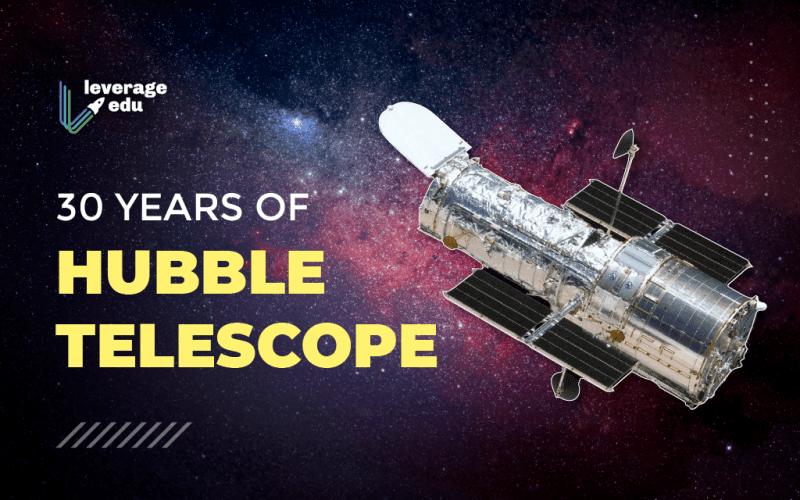It has been 30 years since the launch of the Hubble Telescope by NASA on 24th April 1990. The observatory was put together in the service module of the space shuttle Discovery but, however, for three decades it’s work has been closely connected with the space shuttle. The Hubble Telescope was first expected for release in 1986, but the disastrous Challenger crash at the beginning of that year resulted in a four-year delay of the launch. The Space Observatory as well as its instruments, a global joint project between NASA and the European Space Agency, record unparalleled images of galaxies, galaxies and the remote universe in noticeable, ultraviolet and near-infrared light. These various wavelengths enabled the Telescope to peek into varying regions of space that had not been seen previously. Let’s get to know more about the Hubble Space Telescope on its 30th birthday!
What is the Hubble Telescope?
The Hubble Telescope circles the Planet from a maximum of 340 miles, well above the obfuscating impact of Earth’s atmosphere on space, respectively close and very far. It was named after the renowned astronomer, Edwin Hubble. This Telescope has given us incredible insights about the universe, from distant planets in the furthest universes, said Thomas Zurbuchen who is the Associate Research Administrator at NASA Headquarters which is located in Washington, D.C. It was a very groundbreaking task to launch such a large telescope 30 years ago, and this astronomy powerhouse is still delivering pioneering scientific knowledge. Its stunning images have captured the attention for decades and will continue to empower humankind for years to come, he added in the conference.

While the Hubble Telescope is renowned for the stunning photographs captured with its lenses, they are mostly accompanied by other incredibly important equipment in the form of spectroscopic analysis. The latter addition brings a whole new layer, said Hubble’s senior project scientist who is Jennifer Wiseman. The spectrum recorded with the STIS spectroscope on this Telescope tells you about the distribution of the gases and the movements of the planet and gaseous substances as well.
Explore Branches of Astronomy!
30 Years of Hubble Telescope
During its 30 years in orbit, the Hubble Telescope has applied to every field of astronomy which is from our own solar system to some of the most remote galaxies and more than 15,000 research articles have been written documenting its performance. There are numerous groundbreaking new discoveries by the Hubble Telescope including signs of supermassive black holes found closer to the middle of universes.
Hubble’s Top Accomplishments

Here are the top accomplishments of the Hubble Space Telescope which turns 30 this year!
- Hubble Telescope measured the expansion and acceleration rate of the universe
- It found that black holes are common among different galaxies
- The telescope characterized the atmospheres of planets which is present around other stars
- It monitored the different weather changes on various planets present across our solar system
- It also gave an account of birth and evolution of stars and galaxies.
Here are the top careers in Astronomy!
Thus, Hubble Telescope has documented 1.4 million observations over 30 years till date, which gave rise to more than 17,000 peer-reviewed scientific publications and papers with its data which makes it truly renowned. Are you interested in pursuing a career in Astronomy? Sign up for a free session with our Leverage Edu and we will help you select the right course and university to build a successful career in this field.
 One app for all your study abroad needs
One app for all your study abroad needs
















 45,000+ students realised their study abroad dream with us. Take the first step today.
45,000+ students realised their study abroad dream with us. Take the first step today.

